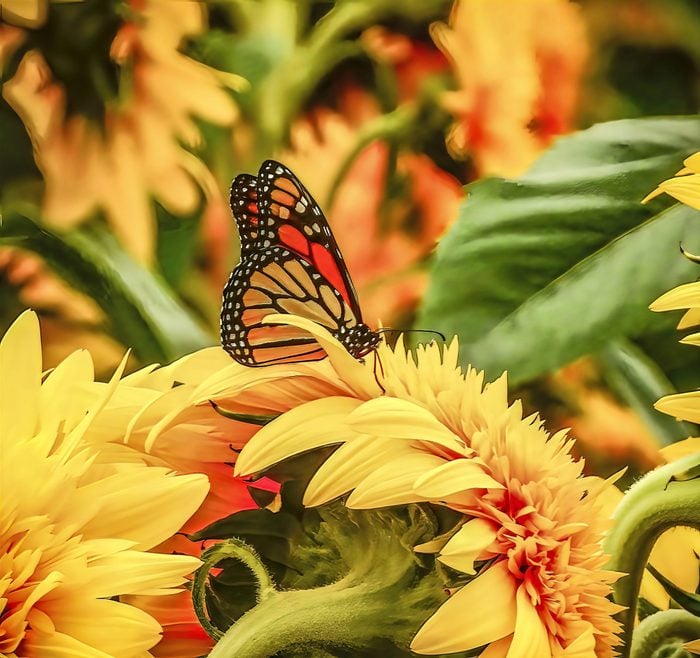
How to Attract Butterflies
Once you figure out how to attract butterflies, it seems so simple. Anyone can fill a butterfly garden with the vivid colors of these delicate visitors. Jaret Daniels, author of multiple butterfly field guides and associate professor at the McGuire Center for Lepidoptera at the University of Florida’s Museum of Natural History, offers his advice for attracting butterflies.
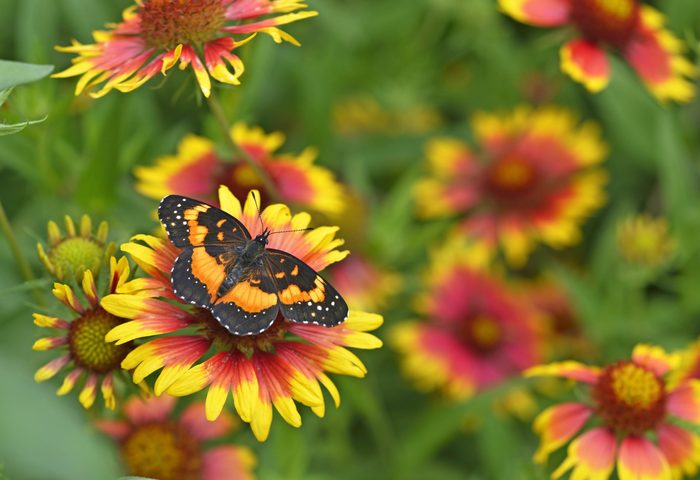
1. Grow Native Plants for Butterflies
Native plants are the perfect choice for a butterfly garden. “They are adapted to the local soils and climate,” Jaret says. “As a result, they often perform better than nonnative species.” You’ll spend less money and effort to attract more butterflies in the long run.
“Natives often have the reputation of looking unkempt or weedy,” Jaret says. “But there are many natives that are just as attractive as nonnative ornamentals.” Visit a native plant nursery or contact your local county extension office to get a good list for your area.
Check out monarch butterfly flowers you should grow.
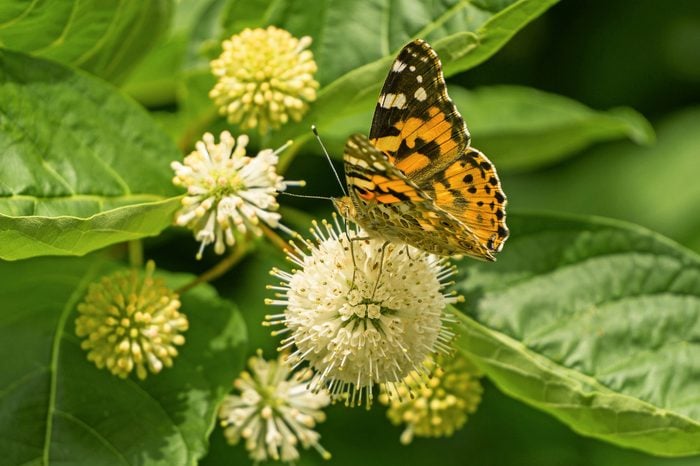
2. Attract Butterflies With Nectar Flowers
Jaret recommends putting in a selection of popular nectar flowers, then getting a good field guide to learn which butterfly species visit them the most. But don’t go crazy and buy one of everything you see.
“The kid-in-a-candy-store approach may not yield the best results,” says Jaret. “Instead, select several really good plants and buy a few of each. The larger waves of color help draw in insects.” Include plants of varying heights, and don’t neglect shady spots—some butterflies prefer them.
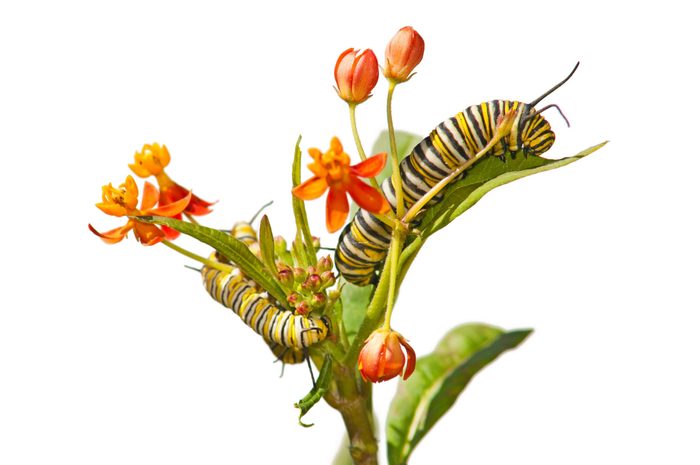
3. Add Butterfly Host Plants
Once you’ve identified the butterflies visiting your yard, add the host plants that their caterpillars need. Each species has its own requirements. For instance, monarchs use milkweed, while eastern black swallowtails eat from the parsley family. Once again, native plants reign supreme, so choose local species of milkweed and other host plants for the most success.
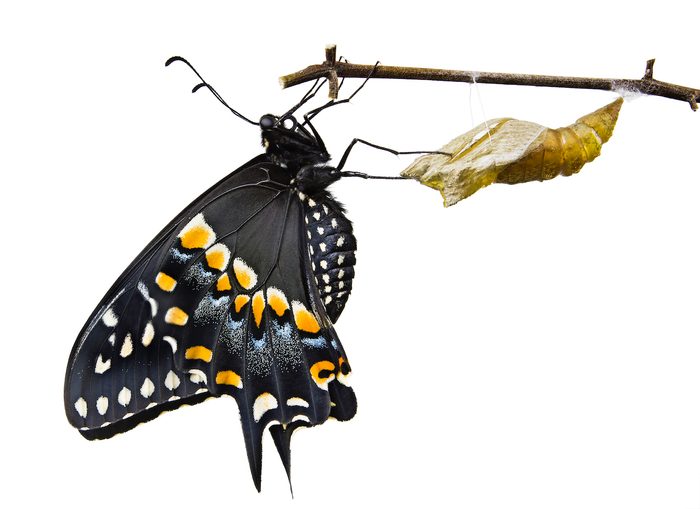
4. Create a Place for Caterpillars
It usually takes about two weeks for a caterpillar to reach full size. Then it spends 10 to 14 days as a chrysalis before emerging as a butterfly. “Most adult butterflies live only a few short weeks,” Jaret says. “The other life stages actually reside in your garden much longer, and are just as attractive and entertaining.”
Of course, all butterfly gardeners should avoid using pesticides altogether. Find alternative ways to deal with true pests, such as picking them off by hand, which helps keep caterpillars safe.
Plant a caterpillar cafe in your butterfly garden.
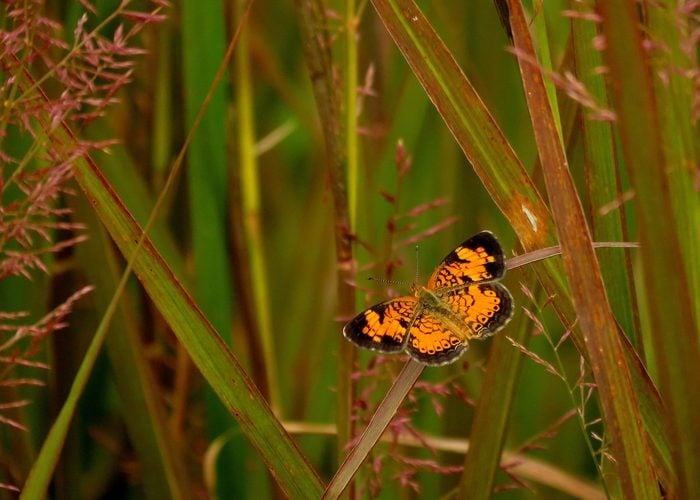
5. Offer Shelter to Protect Butterflies
A butterfly weighs about as much as a paper clip, so to them a raindrop can feel like a bowling ball. They seek shelter in bad weather and overnight, often in shrubbery or ornamental grasses, or tucked into cracks in rock piles. Provide these spaces for extra security.
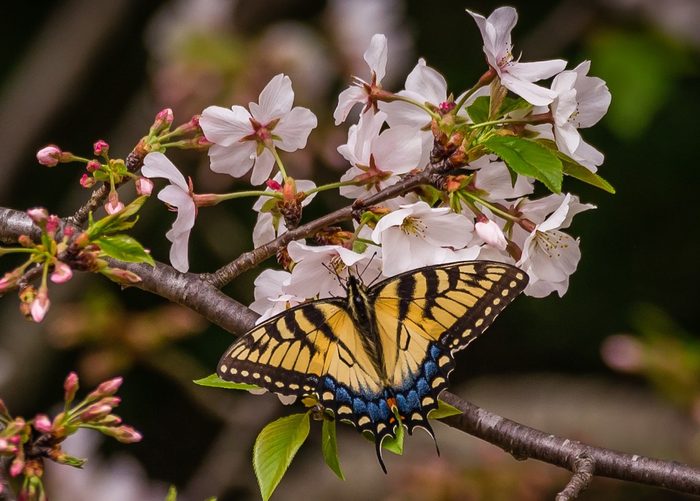
6. Plant Trees for Butterflies
You may picture sunny meadows when thinking of butterflies, but plenty of species, such as red-spotted purples and white admirals, prefer shade. In the spring, running tree sap provides some of the earliest butterfly meals. A few trees serve as host plants, too. For example, tiger swallowtail caterpillars use cottonwood, birch and black cherry trees as nurseries.
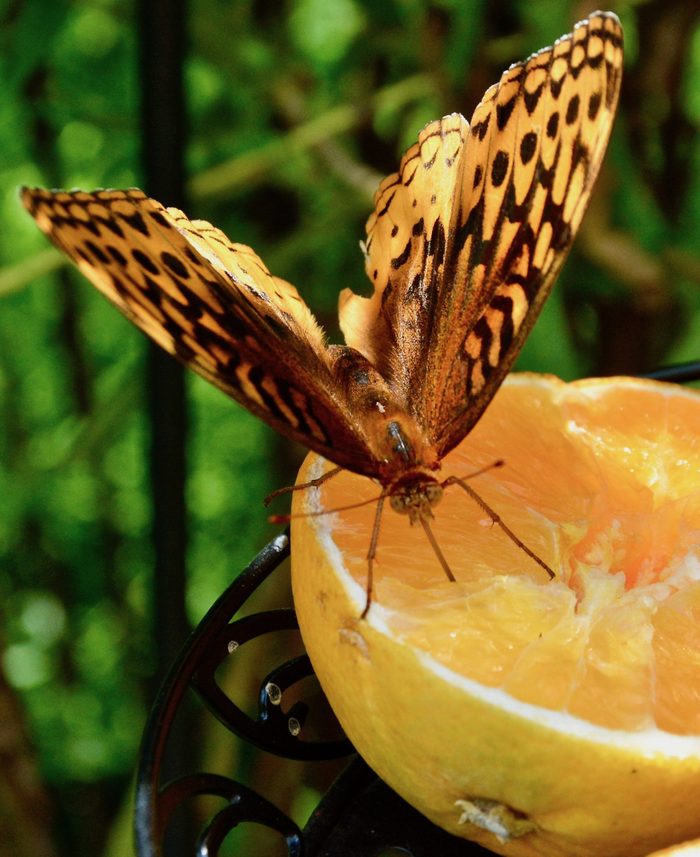
7. Attract Butterflies with Overripe Fruit
Many butterflies enjoy fruit in addition to (or instead of) nectar from flowers. Grow native berry-producing shrubs or fruit trees, allowing the fruit to drop to the ground naturally. As it rots, the fruit becomes a draw for species such as red admirals and mourning cloaks. If you see a lot of fruit lovers, try setting out a plate of overripe bananas or juicy options such as oranges or watermelon. Beware—this can also attract raccoons and other pests, so bring the fruit plate in at night.
Find out which birds love to eat oranges.
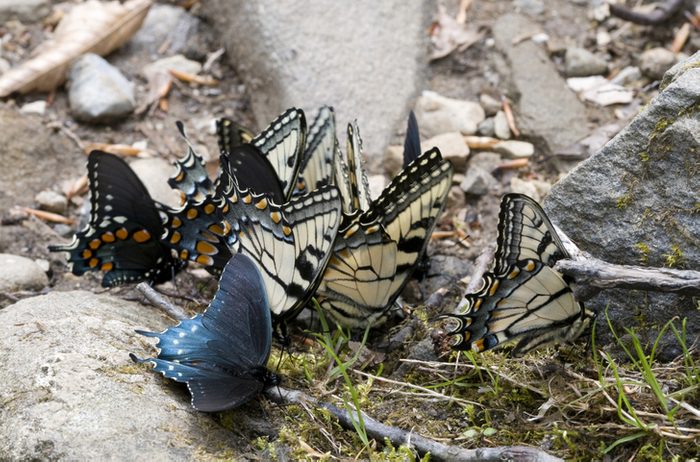
8. Provide Butterfly Puddles and Muddy Spots
Male butterflies like to cluster on mud puddles (or you may find them on animal dung or roadkill), where they glean valuable salts and minerals. So if you have a muddy area in your garden, leave it be. The butterflies will thank you.
If you’re not so lucky, you can still create an artificial puddle. Here’s how to make a DIY butterfly puddler.
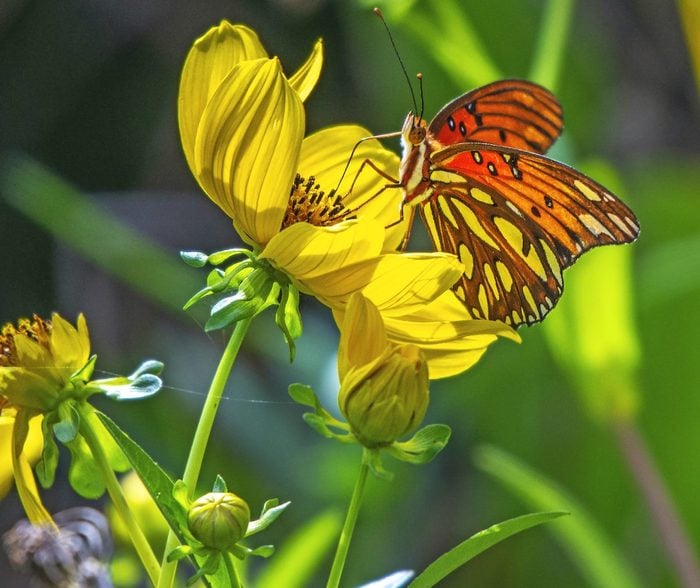
9. Remember Any Space Can Attract Butterflies
Whether you have a huge lot or a tiny balcony, you can attract butterflies. “A butterfly garden can be any size,” says Jaret. “Small beds or container gardens with a combination of colorful nectar plants and a larval host plant or two can be quite effective.”
Jaret shares a final thought: “My theme for the past few years has been ‘all landscapes matter.’ With habitat loss, the landscapes that we as humans manage every day are increasingly important to wildlife. So the choices we make in our home gardens really matter.”
Next, check out 9 butterfly flowers that are easy to grow from seed.
